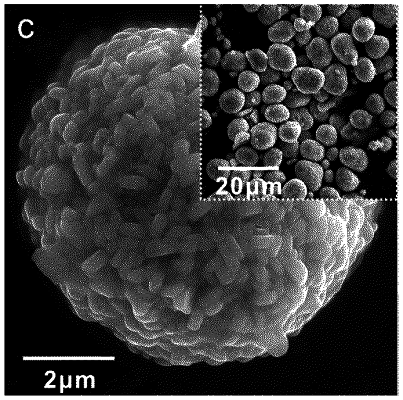| CPC H01M 4/525 (2013.01) [C01G 53/50 (2013.01); H01M 4/0471 (2013.01); H01M 4/505 (2013.01); H01M 2004/028 (2013.01)] | 12 Claims |

|
1. A controlled oxidizing method for preparing a high-performance nickel-rich lithium ion battery cathode material having a composition of LiNixM1-xO2, where 0.6<x<0.9, and M is one or more metals selected from the group consisting of Co, Mn, Fe, Ti, Zr, V, and Cr, the method comprising:
combining a water-soluble salt precursor of nickel and a water-soluble salt precursor of the one or more M metals with one or more oxidizing agents to form an aqueous solution;
alkalizing the aqueous solution to a selected pH value to produce precipitated precursors;
mixing the precipitated precursors with a lithium precursor to form a lithiated precursor;
calcining the lithiated precursor to form the nickel-rich lithium ion battery cathode material having a composition of LiNixM1-xO2, where 0.6<x<0.9, and M is one or more metals selected from the group consisting of Co, Mn, Fe, Ti, Zr, V, and Cr, the nickel-rich lithium ion battery cathode material having a microstructure comprising primary particles with secondary particles formed on the surfaces of the primary particles, the primary particles having manipulated primary grain interfaces with nickel ions on surfaces of the primary particles being oxidized from a 2+ to a 3+ state, the secondary particles formed on the surfaces of the primary particles having a diameter of approximately 5-20 nm, the secondary particles including a three-dimensional monoclinic grain boundary network spread over a surface of the primary particles.
|